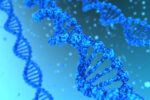WVE-N531 Showing Potential as Exon 53-skipping Therapy in Trial
Early data on first group of 3 boys with Duchenne support safety, suggest efficacy

Wave Life Sciences‘ experimental exon-skipping therapy WVE-N531 appears to be working as expected, according to early data from a small clinical trial of the therapy in a first group of three boys with Duchenne muscular dystrophy (DMD).
“These data provide early evidence that WVE-N531 is … leading to substantial exon skipping after just three consecutive doses. This is the earliest timepoint at which exon skipping has been reported in a clinical trial of boys with DMD,” Anne-Marie Li-Kwai-Cheung, chief development officer of Wave, said in a company press release announcing the results.
“We are encouraged by these early results and are evaluating next steps for the program, including the continuation of this initial cohort. We would like to express our sincerest gratitude to the boys, their families, and the investigators who participated in the study,” Li-Kwai-Cheung said.
Decisions regarding “next steps” for WVE-N531 are expected in 2023, added Paul Bolno, MD, Wave’s president and CEO.
More dystrophin protein goal of exon skipping for Duchenne muscular dystrophy
DMD is caused by mutations in the DMD gene that provides instructions for making dystrophin, a protein that helps maintain muscle health. Like other protein-coding genes, DMD is made up of individual sections called exons, which are strung together to make the mature protein-coding sequence — sort of like how individual words are put together to form a sentence.
Exon skipping is a therapeutic strategy that aims to get a cell’s molecular machinery to leave out (skip) one or more exons when the DMD gene is “read” to make dystrophin protein. Ultimately the goal is to make a shorter, but functional, version of the protein.
WVE-N531 is designed to treat patients who are amenable to skipping of exon 53 in the DMD gene. According to Wave, this represents approximately 8%–10% of DMD patients.
Wave is sponsoring an open-label Phase 1b/2a study (NCT04906460) to test the safety, pharmacological properties, and clinical effects of WVE-N531. Open to patients ages 5 to 18 on a stable corticosteroid regimen and with a disease-causing mutation amenable to exon 53 skipping, the trial is recruiting participants at sites in the U.K. and Canada.
These preliminary results come from three DMD boys, all able to walk, treated with single dose of 1 mg/kg initially, then single doses at 3, 6 and 10 mg/kg. Next, they were given three doses of 10 mg/kg every other week. The experimental therapy was administered via infusion into the bloodstream.
Two weeks after the third and final dose (six weeks after the initial dose), muscle biopsies were taken for analysis. The findings showed that WVE-N531 resulted in a mean of 53% exon skipping at the RNA level. (A copy of the gene in RNA is produced as an intermediary step when a gene is “read” to make protein.)
“It is exciting to see this level of exon skipping in a short period of time, especially since skipping would be expected to increase over a longer dosing interval,” said Laurent Servais, MD, PhD, the study’s primary investigator at Oxford Children’s Hospital.
The mean level of dystrophin protein was 0.27% of normal levels, which is below the lower limit of reliable detection.
“While dystrophin was below the lower limit of detection, it is expected that dystrophin protein production would lag splicing of the RNA transcript,” Li-Kwai-Cheung said.
“Expression of dystrophin after longer exposure will, of course, be key to confirm the promise of these early data,” Servais said. “I look forward to the continued progression of clinical research for WVE-N531.”
Pharmacological data from these first three patients suggest that WVE-N531 might be suitable for once-monthly dosing, according to Wave. Reported safety-related events were all mild except for one moderate case of COVID-19 infection.







